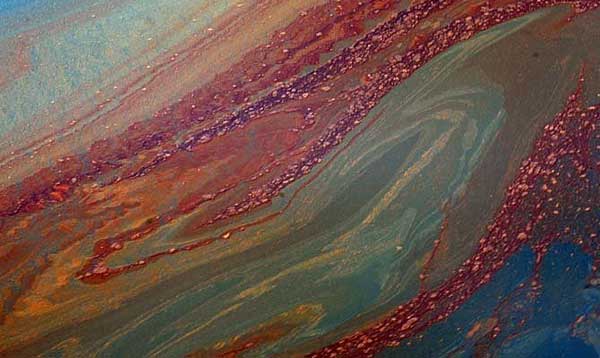
|  |  |  Editorials | Environmental Editorials | Environmental  
Alabama Scientists Find More Evidence that BP Oil Absorbed Into Gulf of Mexico Food Chain
 Mark Schleifstein - Times-Picayune Mark Schleifstein - Times-Picayune
go to original
November 08, 2010


| | A new study by scientists with Alabama's Dauphin Island Sea Lab provides more evidence that the 200 million gallons of oil released from the BP Macondo well disaster were quickly turned into food by bacteria in the Gulf of Mexico. (Michael DeMocker/Times-Picayune) |  |
In a research paper published Monday morning in IOP Publishing's Environmental Research Letters, the scientists found that larger animal plankton organisms contained a greater percentage of a lighter isotope of carbon than of a heavier isotope of carbon, an indicator that the smaller organisms they were feeding on contained carbon from oil.

"The message we have is that a very large fraction of the oil had to have been consumed by microbes, which in turn are food for larger organisms," said William "Monty" Graham, senior marine scientist at the lab and lead author for the paper. "For the most part, it looks like the microbes came to the rescue as the oil came toward shore, and turned it into food."

The research was aimed both at understanding how quickly the oil disappeared from the water and at showing other researchers how to find ways of determining where the oil went when studying larger organisms in the food chain.

"The problem that I think a lot of people have is that they can't connect the dots between all this oil, 200 million gallons, being released and that, other than in some locations where it's being seen in marshes, so much of the oil is gone," Graham said.

"The important point we are trying to make here is that the way to go forward is to look for the shadow of oil, the evidence of where the oil was at one time," he said. "The good way to look for the oil footprint is using the biomarkers present in isotopes of carbon."

Oil contains a greater percentage of carbon 12 isotopes than heavier carbon 13 isotopes, Graham said. The larger number indicates the heavier isotope, or atom, of carbon contains an additional neutron.

The researchers took samples of plankton with special nets at four locations on the shallow to moderately-deep shelf area of the Gulf of Mexico along the Alabama coastline just east of Mobile, and at two sites in Mobile Bay. The samples were collected between early June and mid-August.

The study found that in the weeks after four waves of oil approached the Alabama shoreline, zooplankton organisms in Gulf waters contained a greater percentage of carbon 12 isotopes than the heavier carbon 13 isotopes. Graham said that's an indication that they had eaten smaller organisms that had feasted on oil, because other zooplankton food sources do not contain the same percentage of lighter carbon atoms.

The oil began its journey up the food chain as a banquet for tiny bacteria no larger than one micron. There are 25,400 microns in an inch.

The bacteria were then eaten by small single cell organisms called nanoflagellates, about 20 times larger, which were in turn eaten by ciliates that are about 8/100ths of an inch long.

The next step up are tiny crustaceans called copepods and other large zooplankton, ranging from the size of ciliates to 8/10ths of an inch in length. Those organisms are large enough to be eaten by a wide variety of sea life, from crabs to whales.

The new study did not test for the presence of toxic materials in the zooplankton that were tested for carbon isotopes. Such testing is being done by other researchers participating in a federal-state assessment of damages to natural resources.

Graham personally believes that those tests will find little, if any, evidence of toxic materials moving up the food chain, however. He believes different species of bacteria fed on the toxic substances contained in the oil, such as polycyclic aromatic hydrocarbons, and turned most of the material back into non-toxic constituents.

"When that data comes out, I doubt seriously that anybody will find toxic components of oil in the larger plankton, unless it's microdroplets of oil."

The marine lab's study was supported by a grant from the National Science Foundation under its RAPID program for oil spill research. The work also was supported by the Alabama Department of Conservation and Natural Resources, the National Oceanic and Atmospheric Administration and BP's Gulf Research Initiative, which is a five-year program of grants administered by an independent board to underwrite oil spill research.

The next step for the marine laboratory scientists, Graham said, is to confirm whether the dramatic increase in carbon added to the Gulf by the oil spill resulted in an increase in productivity for the larger zooplankton, or whether the oil might have reduced the productivity of tiny plant species known as phytoplankton, which could have offset the increased production of zooplankton.

The lab has received a grant from BP's Gulf Research Initiative for that study, he said. |

 |
|  |



